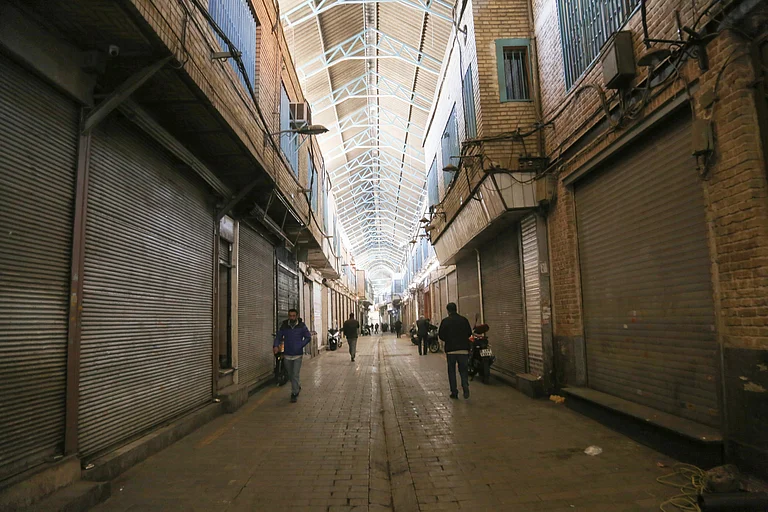Many will recall the promotional poster of the recent Bengali film Belashuru where actor Soumitra Chatterjee is combing the long tresses of Swatilekha Sengupta (both actors passed away before the film was released). The emotionally charged scene was even portrayed by Amul as one of their series of topical ads where the scene was recreated with the Amul girl holding the mirror for Sengupta.
But such artistic impressions of endearing moments of intimacy are not limited to modern arts.
Archaeologists carrying out conservation work near the Varahamihirer Dhipi, a site near Kolkata, have found several key artefacts, among which is a terracotta sealing likely showing a man and a woman in a similar pose.
About 50km from Kolkata by road, Berachampa is a small town which is home to two archaeological ruins known as Chandraketugarh and Varahamihirer Dhipi. According to the Archaeological Survey of India (ASI), the ruins likely date from pre-Mauryan days [prior to 320 BC] to the Pala period [8th to 12th century AD]. Historians believe the name Chandraketu is of mythical origin.
Excavated by the University of Calcutta between 1956-57 and 1966-67 has revealed an almost continuous sequence of occupations, divided into six periods from the pre-Mauryan to Pala period. The protected limits consist of an earthen rampart only. The ASI board at the site mentions that famous as a repertory of exquisite Sunga terracotta, the site has yielded silver punch-marked coins, cast copper coins, coins of Kushana and Gupta periods, terracotta plaques, beds, figurines dating back to various periods, and other antiquities which indicate the place was a prosperous early historical urban settlement.
Varahamihirer Dhipi (‘dhipi’ meaning mound), also known as Khana-Mihirer Dhipi is located at a slight distance from Chandrakeutgarh. Excavated by the University of Calcutta between 1956-57 and 1966-67, the site forms part of the fortified site of Chandraketugarh, according to the ASI, and reveals occupational levels ranging from pre-Mauryan to Pala period. The remains of a polygonal brick structure are believed to be part of a temple belonging to the Gupta period.
The ASI, which was conducting conservation work in the area, came across a cell like structure near the mound, which they believe could be part of a temple. Media reports quoted Shubha Majumder, Superintending Archaeologist of ASI, Kolkata Circle, as saying that the wall is probably part of a structure dating back to 5th to 6th century, which was renovated around 9th and 10th century. The sealing, according to Majumder, is likely dated between 5th and 6th century AD.
“We came across the artefacts while carrying out conservation work at the mound. We are hopeful that future excavations may throw more light on the place,” said Majumder.
Although the recent findings are not available for public viewing, some of the earlier excavated artefacts can be seen in the Asutosh Museum of Indian Art located in the Centenary Building of Calcutta University. It is also possible to make a day trip to Chandraketugarh and Varahamihirer Dhipi from Kolkata during winter. Berachampa is located in between the towns of Barasat and Basirhat.


























